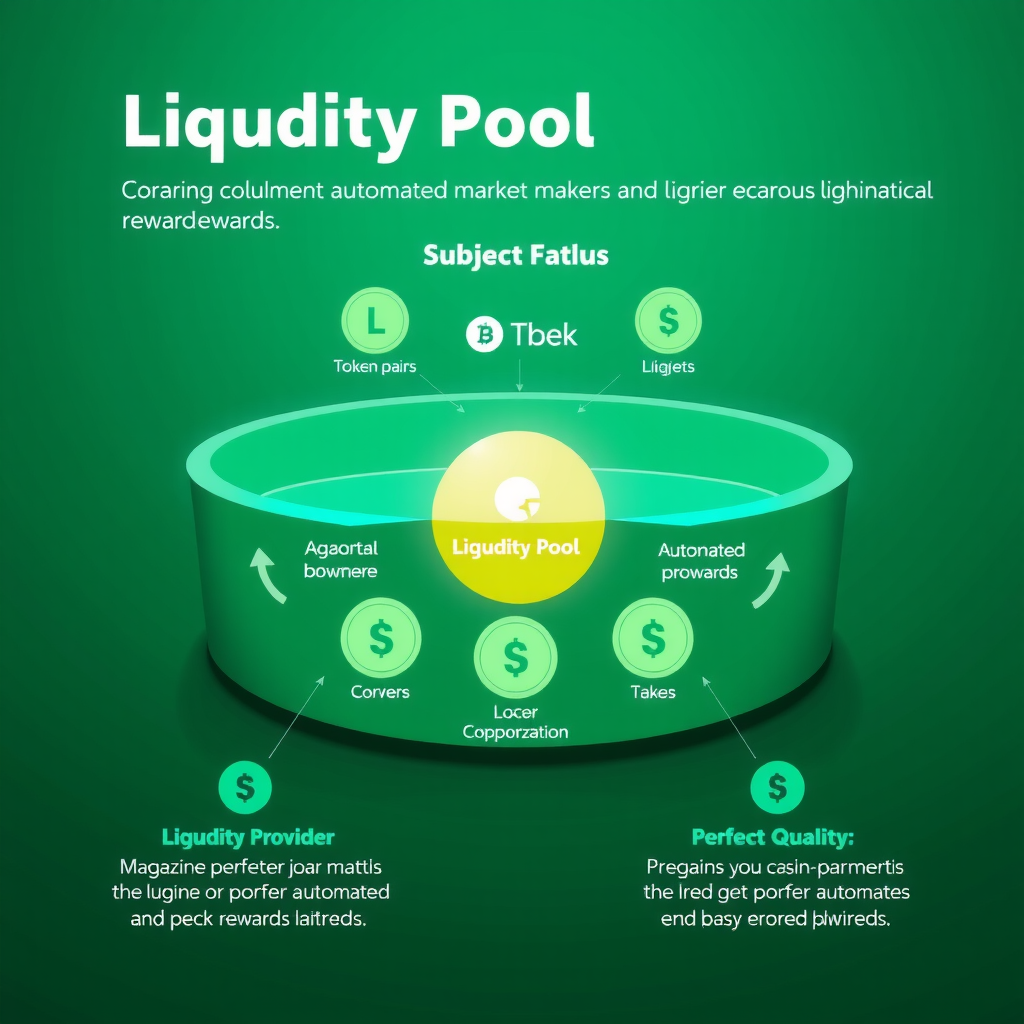
The financial landscape is undergoing a revolutionary transformation through decentralized finance, commonly known as DeFi. This innovative approach to banking and lending leverages blockchain technology to create financial services that operate without traditional intermediaries like banks, brokers, or exchanges. Understanding DeFi is essential for anyone looking to navigate the future of digital finance and capitalize on emerging opportunities in this rapidly evolving space.
What is Decentralized Finance?
Decentralized finance represents a paradigm shift in how financial services are delivered and accessed. Unlike traditional finance, which relies on centralized institutions to facilitate transactions and manage assets, DeFi operates on blockchain networks using smart contracts—self-executing agreements with terms directly written into code.
At its core, DeFi aims to recreate and improve upon traditional financial systems by making them more accessible, transparent, and efficient. Anyone with an internet connection can access DeFi services without needing permission from banks or financial institutions, opening up financial opportunities to billions of people worldwide who are currently underserved by traditional banking systems.
Key Insight:DeFi protocols have locked over $50 billion in total value, demonstrating the growing trust and adoption of decentralized financial services across the global cryptocurrency ecosystem.
Core Components of the DeFi Ecosystem
Smart Contracts: The Foundation
Smart contracts are the building blocks of DeFi applications. These programmable agreements automatically execute transactions when predetermined conditions are met, eliminating the need for intermediaries. Written primarily on blockchain platforms like Ethereum, smart contracts ensure transparency, security, and immutability of financial operations.
The beauty of smart contracts lies in their trustless nature. Users don't need to trust a bank or financial institution; they only need to trust the code, which is publicly verifiable and auditable. This transparency creates a level of accountability unprecedented in traditional finance.
Decentralized Exchanges (DEXs)
Decentralized exchanges allow users to trade cryptocurrencies directly with one another without relying on a centralized platform to hold their funds. Popular DEXs like Uniswap, SushiSwap, and PancakeSwap use automated market maker (AMM) protocols to facilitate trades through liquidity pools rather than traditional order books.

These platforms offer several advantages over centralized exchanges, including enhanced privacy, reduced counterparty risk, and the ability to maintain custody of your assets throughout the trading process. Users connect their cryptocurrency wallets directly to the DEX, maintaining full control over their funds at all times.
Lending and Borrowing Protocols
How DeFi Lending Works
DeFi lending platforms like Aave, Compound, and MakerDAO have revolutionized how people borrow and lend cryptocurrency. These protocols allow users to deposit their crypto assets into lending pools, where they earn interest from borrowers. The interest rates are determined algorithmically based on supply and demand dynamics.
Borrowers can access loans by providing collateral, typically in the form of cryptocurrency. The collateralization requirements are usually higher than traditional finance—often 150% or more—to protect lenders against the volatility of crypto assets. This over-collateralization ensures the system remains solvent even during market downturns.
Understanding Collateralization:If you want to borrow $1,000 worth of stablecoins, you might need to deposit $1,500 worth of Ethereum as collateral. This protects the protocol and lenders if the value of your collateral decreases.
Flash Loans: Innovation in Lending
One of the most innovative concepts in DeFi is the flash loan—a type of uncollateralized loan that must be borrowed and repaid within a single blockchain transaction. While this might sound impractical, flash loans enable sophisticated trading strategies, arbitrage opportunities, and protocol interactions that weren't possible in traditional finance.
Flash loans demonstrate the power of programmable money and smart contracts, allowing developers to create complex financial operations that execute in seconds. However, they also require technical knowledge and carry risks if not properly understood and implemented.
Liquidity Pools and Yield Farming
Understanding Liquidity Pools
Liquidity pools are collections of cryptocurrency tokens locked in smart contracts that provide the liquidity necessary for decentralized exchanges and other DeFi protocols to function. Users who contribute to these pools, known as liquidity providers (LPs), earn a portion of the trading fees generated by the protocol.

When you provide liquidity, you typically deposit an equal value of two different tokens into a pool. For example, you might deposit $500 worth of Ethereum and $500 worth of a stablecoin. In return, you receive LP tokens representing your share of the pool, which you can later redeem for your original assets plus any earned fees.
Yield Farming Strategies
Yield farming, also known as liquidity mining, involves strategically moving crypto assets between different DeFi protocols to maximize returns. Farmers seek out the highest yields by providing liquidity, staking tokens, or participating in various DeFi activities that offer rewards.
While yield farming can be highly profitable, it comes with significant risks. Impermanent loss—the temporary loss of funds compared to simply holding assets—can occur when the price ratio of tokens in a liquidity pool changes. Additionally, smart contract vulnerabilities, protocol risks, and market volatility can all impact returns.
Stablecoins: The Bridge to Traditional Finance
Stablecoins play a crucial role in the DeFi ecosystem by providing price stability in an otherwise volatile market. These cryptocurrencies are designed to maintain a stable value, typically pegged to fiat currencies like the US dollar. Popular stablecoins include USDC, DAI, and USDT.
There are different types of stablecoins: fiat-collateralized (backed by traditional currency reserves), crypto-collateralized (backed by other cryptocurrencies), and algorithmic (using smart contracts to maintain their peg). Each type has its own risk profile and use cases within DeFi.
Stablecoins enable users to move value quickly between different DeFi protocols without exposure to cryptocurrency price volatility. They're essential for lending, borrowing, and trading activities, serving as the primary medium of exchange in many DeFi applications.
Governance and Decentralized Autonomous Organizations
Many DeFi protocols are governed by their communities through decentralized autonomous organizations (DAOs). Token holders can propose and vote on changes to the protocol, including parameter adjustments, new features, and treasury management decisions.
This governance model represents a fundamental shift from traditional corporate structures. Instead of a board of directors making decisions, DeFi protocols distribute decision-making power among token holders, creating a more democratic and transparent system. Governance tokens like UNI (Uniswap) and AAVE give holders voting rights proportional to their token holdings.
Token Tact:Participating in protocol governance not only gives you a voice in the platform's future but can also provide insights into upcoming changes that might affect your investment strategy.
Risks and Challenges in DeFi
Smart Contract Vulnerabilities
Despite rigorous auditing, smart contracts can contain bugs or vulnerabilities that malicious actors might exploit. Several high-profile DeFi hacks have resulted in millions of dollars in losses, highlighting the importance of security in protocol development and the risks users face when interacting with DeFi platforms.
Users should always research protocols thoroughly, check for security audits, and never invest more than they can afford to lose. The immutable nature of blockchain means that once funds are lost to a smart contract exploit, they're typically unrecoverable.
Regulatory Uncertainty
The regulatory landscape for DeFi remains unclear in many jurisdictions. Governments worldwide are grappling with how to regulate decentralized financial services, and future regulations could significantly impact how DeFi protocols operate and who can access them.
This uncertainty creates both risks and opportunities. While regulatory clarity could bring more institutional adoption and legitimacy to DeFi, overly restrictive regulations might stifle innovation and limit access to these services.
Market Volatility and Liquidation Risks
The cryptocurrency market's inherent volatility poses significant risks for DeFi users, particularly those using leverage or providing collateral for loans. Rapid price movements can trigger liquidations, where the protocol automatically sells your collateral to repay loans, often at unfavorable prices.

Understanding liquidation thresholds and maintaining healthy collateralization ratios is crucial for anyone participating in DeFi lending and borrowing. Many experienced users set up alerts and maintain buffer collateral to avoid unexpected liquidations during market volatility.
The Future of DeFi and Traditional Banking
DeFi represents more than just an alternative to traditional banking—it's a reimagining of how financial services can be delivered. As the technology matures and user experience improves, we're likely to see increased integration between DeFi and traditional finance.
Major financial institutions are already exploring blockchain technology and DeFi concepts. Some banks are developing their own DeFi-inspired products, while others are partnering with existing protocols to offer their customers access to decentralized financial services.
The concept of Evolution Zenith in financial technology suggests that we're moving toward a hybrid model where the best aspects of both centralized and decentralized finance coexist. This evolution could bring the efficiency and accessibility of DeFi to mainstream users while maintaining the regulatory compliance and consumer protections of traditional finance.
Getting Started with DeFi
Essential Tools and Preparation
Before diving into DeFi, you'll need several essential tools. First, a non-custodial cryptocurrency wallet like MetaMask, Trust Wallet, or Ledger is necessary to interact with DeFi protocols. These wallets give you full control over your private keys and assets.
You'll also need to acquire some cryptocurrency to pay for transaction fees (gas fees) and to use within DeFi protocols. Ethereum remains the dominant blockchain for DeFi, though alternatives like Binance Smart Chain, Polygon, and Avalanche are gaining traction due to lower fees and faster transactions.
Starting Small and Learning
The best approach for newcomers is to start with small amounts and focus on learning how different protocols work. Begin with simple activities like swapping tokens on a decentralized exchange or providing liquidity to a stable pair before moving on to more complex strategies like yield farming or leveraged positions.
Take time to understand the risks associated with each protocol and strategy. Read documentation, join community forums, and follow experienced DeFi users to learn best practices. The DeFi space moves quickly, and continuous learning is essential for success.
Safety First:Always verify contract addresses, use hardware wallets for significant amounts, enable two-factor authentication where possible, and be wary of projects promising unrealistic returns. If something seems too good to be true, it probably is.
Conclusion: Embracing the DeFi Revolution
Decentralized finance represents a fundamental shift in how we think about and interact with financial services. By removing intermediaries and leveraging blockchain technology, DeFi creates opportunities for financial inclusion, innovation, and efficiency that weren't possible in traditional systems.
While the space comes with risks and challenges, the potential benefits are substantial. As protocols mature, security improves, and user experience becomes more intuitive, DeFi is poised to play an increasingly important role in the global financial system.
Whether you're looking to earn yield on your crypto assets, access loans without traditional credit checks, or simply explore the cutting edge of financial technology, DeFi offers unprecedented opportunities. By understanding the fundamentals covered in this article and approaching the space with appropriate caution and curiosity, you can position yourself to benefit from this financial revolution.
The future of banking and lending is being built today on blockchain networks around the world. By educating yourself about DeFi and participating responsibly, you're not just observing this transformation—you're becoming part of it.